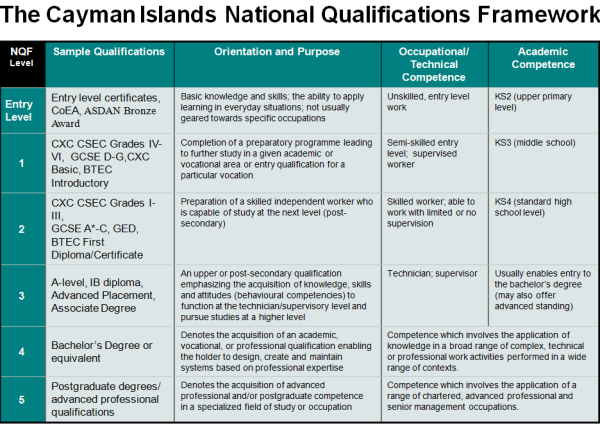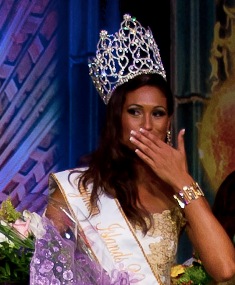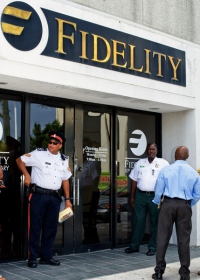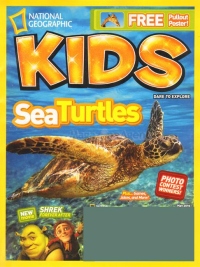Archive for September, 2010

Teaching and learning
Given the depths to which education in the Cayman Islands was allowed to plumb, a continued national conversation on what and how our children are taught is vital. However, it’s a pointless exercise unless the public keeps up with what is happening in the delivery of education and what changes and improvements have already been made – and why.
Right in the middle of massive and well publicised changes to the whole education system, there is a constant cry that we need to reform education. How can we have any meaningful discussion as to what the aims and objectives are and whether new initiatives are working if the public has not even acknowledged that change is afoot?
Periodically, there are comments on CNS that government schools need a new curriculum, even though this was introduced two years ago and is now under its scheduled review. A discussion about what is good and bad about the 2008 National Curriculum, what works and what doesn’t is a good thing, but if you haven’t read it you need to do so before your opinion has any relevance.
And please! Stop saying we need to introduce (or reintroduce) vocational studies when this has already happened. We need to get on to the next stage of discussion. Are they the right subjects? Are they effective?
It’s time for everyone to stop fussing about “graduation” from high school and focus on what is actually important: external, internationally recognized exam results (including the vocational exams). Government schools provide a UK style of education, which means that graduation is a nice ceremony, a rite of passage perhaps, but it is not a qualification or an academic achievement and never was.
Graduates, take those certificates that were handed to you during the graduation ceremony, be proud of them, hang them on the wall … but don’t bother taking them to a job interview or including them in a college application because they are academically meaningless. Similarly, if you didn’t graduate because you fell short of the requirements, including attendance and behavior (and more power to the Department of Education Services for insisting on this) it’s not the end of the world.
Here’s the important question: how many exams did you pass and what grades did you get?
Part of the confusion here in the Cayman Islands is that people look at North America, or went to school in the US or Canada, where a high school diploma actually means something, and assume the same applies here. It doesn’t. In Britain and countries that follow the British school system there is no such thing as a high school diploma. The conversations needs to stick to improving exam results not stray into why students can graduate without academic achievement — an entirely irrelevant discussion.
Among the many changes going on, the most drastic is the restructuring of the high schools to a 5+1 system.
In the UK, children go to high school when they are 11 and take their GCSE’s or equivalents when they are 15/16. (In fact, in an increasingly competitive academic environment there is a trend for the most able students to take some GCSE’s early at 14/15 or even younger.) There is a range of options available following this including, especially for students aiming for university, two-year A-level courses, Advanced Placement or International Baccalaureate diplomas. A-level studies are broken down into a 1-year AS course, followed by a second year leading to A-level exams. At university, undergraduates take a 3-year bachelor’s degree.
In the US and Canada students remain at high school for six years, earn their high school diploma and then go on to a 4-year university course.
Back in the early 1990’s it was decided that the Cayman Islands government schools, despite the fact that they followed the UK system, would stretch the five years of high school into six – the kids would be a year older before they went to college or left school for the job market and it would give them an additional year to take their exams, hopefully raising the rather poor achievement levels. It didn’t. In fact, results got even worse and have been consistently dismal ever since.
The system also served the top students badly; those who headed off to a college in the US may have been given a year to mature emotionally but they had not been provided the opportunity to take pre-college courses to prepare them for the rigours of university study, especially in mathematics, where many struggled.
The Education Ministry is doing the right thing bringing Cayman back into line with the UK and everywhere else in the world that uses the same system. Last year’s Year 11 took their exams at the appropriate time.
The construction of the new schools tends to grab all the attention but we also need to focus our attention on the teaching and learning aspects of education. The current education minister is at pains to avoid acknowledging what the previous minister achieved but does appear to be doing the right thing: assessing the changes, continuing the things that worked and adapting the things that didn’t.
Let’s be clear: an historical average of 24% of students achieving 5 or more Level 2 passes is a big fat fail. Radical change is desperately needed, so let’s all keep up with what’s happening so we can discuss those changes productively.

Exam results up
 (CNS): Cayman Brac High School has had a banner year for exam results with 65% of the graduating Year 12 class obtaining five or more high level passes and 38% obtaining seven or more, parents were told at a PTA meeting last week. At a recent presentation to teachers on Cayman Brac, Education Ministry Senior Policy Advisor Clive Baker said that results for John Gray High School improved slightly over the previous year, with 38% of Year 12 students getting 5 or more high level passes, up from 36% on 2009. Historically, the average at CBHS has been just under 50% and about 24% at JGHS.
(CNS): Cayman Brac High School has had a banner year for exam results with 65% of the graduating Year 12 class obtaining five or more high level passes and 38% obtaining seven or more, parents were told at a PTA meeting last week. At a recent presentation to teachers on Cayman Brac, Education Ministry Senior Policy Advisor Clive Baker said that results for John Gray High School improved slightly over the previous year, with 38% of Year 12 students getting 5 or more high level passes, up from 36% on 2009. Historically, the average at CBHS has been just under 50% and about 24% at JGHS.
High level passes are described as Grades 1 to 3 in CXC or CSEC exams, and A* to C in GCSE exams, which are Level 2 on the new National Qualification Framework. The NQF is a chart showing the academic levels of achievement for the various external examinations that are taken by Cayman Islands students, which allows students, parents and potential employers to assess results on a nationally recognized scale (see NQF chart below). For example, a vocational BTEC Introductory course is the academic equivalent on the NQF as a CXC grade 4-6, while a BTEC First diploma is the equivalent of CXC grades 1-3.
While CXC/GCSE exam results improved in the Cayman Islands, in Britain GCSE pass rates continued to rise for 23rd year in a row. Though the equivalent results statistics are not available, the UK media reported that overall, 69.1% of all GCSE entries were awarded at least a C grade, up two percentage points on 2009, and 22.6% of entries achieved an A* or an A, up one percentage point on last year.
The Education Mnistry has not released results for the current Year 12 students on Grand Cayman (the first year group to take external exams at the end of Year 11) sayingthat these will be available next year when students have completed all their exams. However, these students now have a range of options available.
Baker said that around 20 Year 12 students at have chosen the Advanced Placement course, for which they must have at least 5 high-grade passes, including English and Maths, at A*-B/I-II grades. “This is a straightforwardly academic stream, aimed at the highest achieving students in the school,” he said.
AP better prepares students for university than the CXC/GCSEs, which are not designed to be pre-college courses. It also provides college credits for most US universities and in some cases could give students enough credit to skip the first year of a US bachelor’s degree, Baker said. Furthermore, as an accepted A-level equivalent, AP also offers a pathway to UK universities.
Advanced Placement courses are created by the College Board and are more rigorous than courses offered at US high schools. APs are individual subjects and college credit is usually given for a grade of 3 or above (5 being the highest).
According to the ministry, in future students must have passed exams at Level 3 on the NQF to qualify for a government scholarships for a bachelor’s degree. This includes the AP programme, but students can also take A-levels, which are offered at several local private schools, or an associate’s degree, which is offered at UCCI and ICCI.
There is around $2 million in this year’s budget for the Ministry of Education to construct a new building on Cayman Brac to house the restructured Year 12 group when it is introduced on that island, Baker revealed. While the restructuring of the high schools on Grand Cayman took place this year, and last year’s Year 11 have now started their new Year 12 options, the first year group on the Brac that will have the same opportunities is the current Year 9, who will choose their exam options at the end of this school year, at the same time as the Year 10 students.
However, CBHS Principal Adrian Jones told parents at a PTA meeting that BTEC courses in engineering, hospitality and music have already been introduced this year. These courses can lead to a Level 2 qualification on the NQF, he said.
To find out more about changes to the education system, go to the ministry’s blog, where there are PowerPoint presentations on what’s happening.


New Miss Cayman crowned
 (CNS): After a year’s absence the country now has a new Miss Cayman Islands. Tipped as a hot favourite to win, six foot, 23-year-old Cristin Alexander walked away with the pageant crown on Saturday night. Cristin is a recent graduate of the University of Western Ontario, where she earned a degree in psychology. Originally from Bodden Town, Cristin will now travel to China to represent Cayman in the Miss World pageant later this year. Shari Walton was First Runner-up for the title and Mysti Bush was Second Runner-up. Cristin also took the Best Legs title and Shari won Best Gown and Best Smile, Miss Photogenic went to Mysti and Miss Personality was awarded to Trudyann Duncan. (Photo by Dennie Warren Jr)
(CNS): After a year’s absence the country now has a new Miss Cayman Islands. Tipped as a hot favourite to win, six foot, 23-year-old Cristin Alexander walked away with the pageant crown on Saturday night. Cristin is a recent graduate of the University of Western Ontario, where she earned a degree in psychology. Originally from Bodden Town, Cristin will now travel to China to represent Cayman in the Miss World pageant later this year. Shari Walton was First Runner-up for the title and Mysti Bush was Second Runner-up. Cristin also took the Best Legs title and Shari won Best Gown and Best Smile, Miss Photogenic went to Mysti and Miss Personality was awarded to Trudyann Duncan. (Photo by Dennie Warren Jr)

Delhi Games’ village ‘ready by Wednesday’
 (BBC): The Chief Minister of Delhi, Sheila Dixit, says the athletes’ village for the Commonwealth Games won’t be finished until Wednesday. The news follows mounting criticism over India’s preparations for the Games, which open next Sunday. About 4,000 people are working around the clock to get the village ready, as competitors from across the world begin to arrive. Athletes from Kenya, Scotland and India are now living in the village. But some competitors have already pulled out of the Games after the accommodation was described as filthy, uninhabitable and unsafe. Ms Dixit visited the site on Sunday to check on progress.
(BBC): The Chief Minister of Delhi, Sheila Dixit, says the athletes’ village for the Commonwealth Games won’t be finished until Wednesday. The news follows mounting criticism over India’s preparations for the Games, which open next Sunday. About 4,000 people are working around the clock to get the village ready, as competitors from across the world begin to arrive. Athletes from Kenya, Scotland and India are now living in the village. But some competitors have already pulled out of the Games after the accommodation was described as filthy, uninhabitable and unsafe. Ms Dixit visited the site on Sunday to check on progress.
After talking to officials she said work was "on track".

Accused murderer was headed for Cayman
(Honduras News): Marcos Joel Álvarez Barahona, aka “the Unicorn” was arrested by National Police while trying to leave the country. Álvarez Barahona is a member of the Mara Salvatrucha, and believed to be one of those responsible for killing the Ceibeño journalist, David Meza Montecinos. The suspect was apprehended at the police post on the southern exit of La Ceiba, where he was being transported by ambulance. According to the Director General of the National Police, José Luís Muñoz Licona, their intelligence agencies warned of the intentof the alleged murderer to leave the country. Álvarez Barahona was bound for Grand Cayman they warned, and would try to mislead the security agencies by being transported in the ambulance as a patient.

Bush tells UN to include CI
 (CNS): The Cayman Islands premier has told the United Nations to include Associate Members such as the Cayman Islands in regional assistance programmes and recommended making islands more competitive as the focus of the next stage of the Mauritius Strategy. Bush was speaking at the roundtable for the High-level Review Meeting on Implementation of the Mauritius Strategy in New York on Friday afternoon when hesaid islands such as Cayman were being left out of assistance programmes because of political or constitutional reasons. “The Mauritius Strategy for the Caribbean cannot be fully implemented if some islands are excluded on political or constitutional grounds. We are just as vulnerable to hurricanes, earthquakes and sea level rise as our neighbours,” Bush said.
(CNS): The Cayman Islands premier has told the United Nations to include Associate Members such as the Cayman Islands in regional assistance programmes and recommended making islands more competitive as the focus of the next stage of the Mauritius Strategy. Bush was speaking at the roundtable for the High-level Review Meeting on Implementation of the Mauritius Strategy in New York on Friday afternoon when hesaid islands such as Cayman were being left out of assistance programmes because of political or constitutional reasons. “The Mauritius Strategy for the Caribbean cannot be fully implemented if some islands are excluded on political or constitutional grounds. We are just as vulnerable to hurricanes, earthquakes and sea level rise as our neighbours,” Bush said.
The Mauritius Strategy is a programme of action for the sustainable development of small island developing states (SIDS). The meeting was opened by Ban Ki-moon on Friday morning when he spoke about the vulnerabilities small island developing states face unique as a result of their small size, isolation, narrow resource base, limitations on economies of scale, and high exposure to global environmental threats.

NRA to start Elgin Avenue road works
 (CNS): Traffic flows in parts of the capital are set to be disrupted until February next year as major road works begin along one of George Town’s main thoroughfares this month. The Ministry of District Administration, Works, Land and Agriculture has given the go-ahead to begin the Elgin Avenue road expansion related to the new administration building. Works Minister Juliana O’Connor-Connolly said the aim is to improve future traffic flow along the already busy road as well as public safety ahead of the opening of the government’s new office accommodation, situated next to the existing glass house.
(CNS): Traffic flows in parts of the capital are set to be disrupted until February next year as major road works begin along one of George Town’s main thoroughfares this month. The Ministry of District Administration, Works, Land and Agriculture has given the go-ahead to begin the Elgin Avenue road expansion related to the new administration building. Works Minister Juliana O’Connor-Connolly said the aim is to improve future traffic flow along the already busy road as well as public safety ahead of the opening of the government’s new office accommodation, situated next to the existing glass house.

Break bra in case of emergency
 (Salon): Breasts, as a source of food, are life-sustaining, and now they are potentially even more so in emergency situations. Ladies and gentlemen, the Emergency Bra, an invention that won Dr. Elena Bodnar the 2009 Ig Nobel Public Health Prize, has officially hit the market. The brassiere, which quickly converts into two gas masks, is available online for 29.95. Also: There are t-shirts reading, "Emergency bra under here." (Personally, I was hoping for one reading, "Break bra in case of emergency.") It may sound like a joke invention, but it’s not: Bodnar studied the Chernobyl disaster in 1986 and found that, as Fox News reports, "if people had had cheap, readily available gas masks in the first hours after the disaster … they may have avoided breathing in Iodine-131, which causes radiation."
(Salon): Breasts, as a source of food, are life-sustaining, and now they are potentially even more so in emergency situations. Ladies and gentlemen, the Emergency Bra, an invention that won Dr. Elena Bodnar the 2009 Ig Nobel Public Health Prize, has officially hit the market. The brassiere, which quickly converts into two gas masks, is available online for 29.95. Also: There are t-shirts reading, "Emergency bra under here." (Personally, I was hoping for one reading, "Break bra in case of emergency.") It may sound like a joke invention, but it’s not: Bodnar studied the Chernobyl disaster in 1986 and found that, as Fox News reports, "if people had had cheap, readily available gas masks in the first hours after the disaster … they may have avoided breathing in Iodine-131, which causes radiation."

Downtown bank robbed
 (CNS): Three masked suspects robbed the Fidelity Bank in Dr Roy’s Drive shortly before 10.00 this morning (Friday 24 September). Police said the men, who were all armed with what appeared to be firearms, entered the bank and threatened customers and staff, and witnesses said they told everyone to lie on the floor. The men then made off with a sum of cash. No shots were fired and, although no one was injured, staff and customers were left shaken by the ordeal. It is believed that the men responsible left the scene in a black coloured Jeep Compass. Police uniformed and armed officers immediately attended the scene. The RCIPS Air Operations Unit was also deployed to assist in the search for the suspects. (Photo by Dennie Warren Jr)
(CNS): Three masked suspects robbed the Fidelity Bank in Dr Roy’s Drive shortly before 10.00 this morning (Friday 24 September). Police said the men, who were all armed with what appeared to be firearms, entered the bank and threatened customers and staff, and witnesses said they told everyone to lie on the floor. The men then made off with a sum of cash. No shots were fired and, although no one was injured, staff and customers were left shaken by the ordeal. It is believed that the men responsible left the scene in a black coloured Jeep Compass. Police uniformed and armed officers immediately attended the scene. The RCIPS Air Operations Unit was also deployed to assist in the search for the suspects. (Photo by Dennie Warren Jr)
CID officers are still at the scene interviewing witnesses and a scene of crime examination is ongoing.
One suspect is described as having brown complexion, 6 feet in height, weighing about 180 pounds. He was wearing a white overall over his face and dark glasses. The second had a dark brown complexion, and was wearing denim pants and a white and grey coloured shirt. The third man had a dark brown complexion, and wearing a white shirt and dark pants. All three had their faces covered and were carrying what appeared to be firearms.
Brett Hill, Fidelity’s President & CEO, said, “We are assisting [police] with their enquiries and we are thankful that none of our customers or members of staff were injured in this incident. The branch will be closed for the rest of the day to allow the Police to continue with their investigations.” He added that customers requiring access to Fidelity’s services today may do so at either the Fidelity Financial Centre Branch on West Bay Road of at their Money Centre Branch on Godfrey Nixon Way. The Dr. Roy’s Drive Branch will re-open for business on Monday morning.
Anyone with any information about this crime should call George Town police station on 949-4222 or the confidential Crime Stoppers number 800-8477(TIPS).

Young Nat Geo explorers to win Cayman field trip
 (CNS): Promoting hands-on exploration among America’s youth, National Geographic Kids magazine is bringing 15 young explorers, who will all be winners in an essay and photo competition, to the Cayman Islands next summer for a seven-day expedition, which the magazine describes as “the field trip of a lifetime”. In a press release, National Geographic says it is currently looking for the future generation of great explorers for the 2011 National Geographic Kids Hands-On Explorer Challenge. Winners will fly Cayman Airways to explore the wild wonders of the islands with National Geographic and local experts as their guides. Competition winners in past years have gone to the Galápagos Islands, South Africa, Australia and Peru.
(CNS): Promoting hands-on exploration among America’s youth, National Geographic Kids magazine is bringing 15 young explorers, who will all be winners in an essay and photo competition, to the Cayman Islands next summer for a seven-day expedition, which the magazine describes as “the field trip of a lifetime”. In a press release, National Geographic says it is currently looking for the future generation of great explorers for the 2011 National Geographic Kids Hands-On Explorer Challenge. Winners will fly Cayman Airways to explore the wild wonders of the islands with National Geographic and local experts as their guides. Competition winners in past years have gone to the Galápagos Islands, South Africa, Australia and Peru.
Activities will include snorkelling in world-renowned Stingray City, visiting the Queen Elizabeth II Botanic Park to see fabulous flowers and rare butterflies found nowhere else in the world, and hiking along the nature trails of Grand Cayman — home to the blue iguana, which is being brought back from near extinction by the Blue Iguana Recovery Program. As part of their prize, all explorers also will be equipped with their own digital cameras, courtesy of Nikon®. The Hands-On Explorers will learn about the amazing places they visit and will receive tips from National Geographic experts on capturing their discoveries in photographs and words.
National Geographic Kids Hands-On Explorer Challenge is a national essay and photo competition for kids ages 9-15 and is in its fifth year. Nearly 12,000 entries have been received since the program’s inception, with past expeditions taking winners to the Galápagos Islands (2006), South Africa (2007), Australia (2008) and Peru (2009). This year’s expedition, created in conjunction with the Cayman Islands, is scheduled to embark next summer.
"We are excited to be working with such a credible brand as National Geographic and thrilled that they recognized the uniqueness of the Cayman Islands to be the host destination for this year’s National Geographic Kids Hands-On Explorer Challenge," says Shomari Scott, acting director of tourism, the Cayman Islands. "We look forward to sharing the vast array of experiences that our islands have to offer with the next generation of great explorers."
Fifteen kids who submit entries that best meet the judging criteria will be selected for the 2011 Expedition Team. Winning submissions will creatively incorporate the topic of water in essays that describe what inspires or excites the kids as they explore their world. "National Geographic Kids magazine is pleased to partner with the Cayman Islands on the 2011 Expedition. This family-friendly destination is rich in wildlife on both land and sea, making it the perfect match for this year’s water-themed contest," says Melina Bellows, chief creative officer, National Geographic Kids and Family.
To enter the Hands-On Explorer Challenge, kids must write an original personal essay of no more than 300 words, telling National Geographic Kids magazine how they actively explore their world. Essays should creatively incorporate the topic of water while explaining what inspires and excites them as they explore their world. Entrants should consider how water is essential to life everywhere — from dew on a leaf to the sea that surrounds the Cayman Islands. To complete the entry, students also must submit a photograph that they have taken that illustrates their essay. The contest is open only to legal residents of the United States (excluding residents of Puerto Rico) and Canada (excluding residents of Quebec) who are ages nine to fifteen (9-15) as of July 1, 2011. A panel of National Geographic experts will select the 15 winners. Each winner will bring a parent or guardian on the expedition.
No purchase is necessary. The Cayman Islands expedition is scheduled for July 2011. Entries must be postmarked by 1 December2010, and received by 7 December 2010. Complete rules and details are online at http://kids.nationalgeographic.com/kids/contests/explorer-trip-2011.
Visit the National Geographic Kids Magazine at kids.nationalgeographic.com.